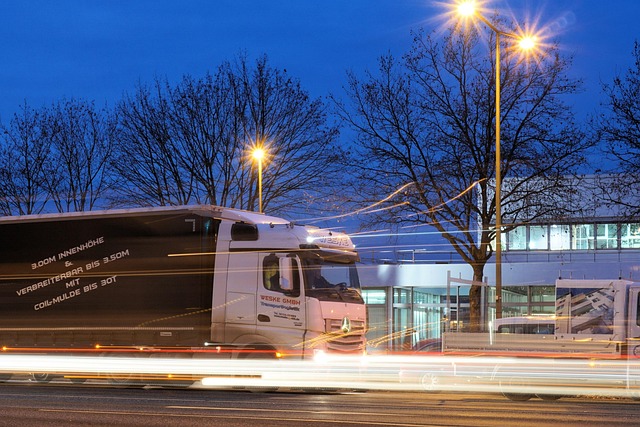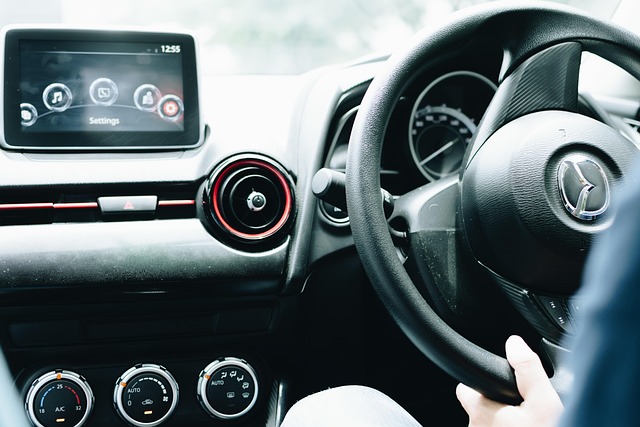Vehicle-to-Vehicle (V2V) communication revolutionizes commuting by enabling direct, real-time data exchange between cars for enhanced safety and efficiency. Integrating with connected car features, V2V shares location, speed, and direction, preventing accidents and optimizing traffic flow in smarter cities. This technology faces interoperability challenges but offers immense potential for smart grids, enhanced road safety, and greener urban mobility.
Modernize your commute with Vehicle-to-Vehicle (V2V) integration, a game-changing technology transforming transportation. This article delves into the intricacies of V2V communication, exploring its benefits for daily commuters and navigating implementation challenges. From enhancing safety through real-time data sharing to revolutionizing traffic flows, V2V integration promises a smarter, safer future on the roads. Understand how this cutting-edge technology is shaping our transport landscape and what lies ahead in terms of prospects and advancements in V2V communication.
- Understanding Vehicle-to-Vehicle Communication Technology
- Benefits of V2V Integration for Daily Commuters
- Navigating Implementation Challenges and Future Prospects
- Enhancing Safety: Real-Time Data Sharing in Transport
Understanding Vehicle-to-Vehicle Communication Technology

Vehicle-to-Vehicle (V2V) communication technology is revolutionizing the way we commute by enabling direct, real-time data exchange between cars on the road. This innovative system allows vehicles to “talk” to each other, sharing information such as location, speed, and direction. By selecting V2V communication, automakers are embracing market trends in automotive networking that promise enhanced safety and efficiency. For instance, V2V can help prevent accidents by warning drivers of potential hazards like sudden stops or drifting into another lane.
In the realm of emergency services, V2V has the potential to save lives. Connected cars equipped with this technology can alert nearby vehicles about an ambulance or police car approaching, prompting other drivers to yield and create a safe passage. Moreover, V2V integrates seamlessly with connected car safety features, leveraging automotive wireless standards to ensure reliable and secure data transmission. This not only enhances overall safety but also contributes to the development of smarter, more responsive cities, where vehicles communicate collaboratively to optimize traffic flow.
Benefits of V2V Integration for Daily Commuters

Vehicle-to-Vehicle (V2V) integration offers a myriad of benefits for daily commuters, transforming their travel experiences and contributing to a safer, more efficient transportation network. By enabling direct communication between vehicles, V2V technology facilitates real-time exchange of data such as location, speed, and safety alerts. This enhances awareness on the road, allowing drivers to anticipate potential hazards and make informed decisions promptly. For instance, if a vehicle ahead encounters sudden traffic obstructions or unsafe conditions, this information can be swiftly relayed to nearby vehicles, enabling everyone to adjust their routes accordingly and avoid accidents.
Moreover, V2V integration contributes to energy-efficient transportation by optimizing traffic flow. When equipped with V2V communication technology, vehicles can coordinate movements more efficiently, reducing congestion and minimizing the overall energy consumption. This not only saves drivers money through reduced fuel expenses but also lowers carbon emissions, making it a cost-effective V2V solution that aligns with global sustainability goals.
Navigating Implementation Challenges and Future Prospects

Implementing Vehicle-to-Vehicle (V2V) communication technology comes with its unique set of challenges. One of the primary hurdles is ensuring interoperability across different vehicle models and manufacturers, as a haphazard rollout could lead to fragmented networks. Standardization and protocols must be established to facilitate seamless data exchange, benefiting both individual drivers and urban mobility solutions.
Looking ahead, the future of V2V integration holds immense potential for smart grid integration, enhancing road safety, and optimizing traffic flow. As security in V2V communications becomes a priority, advancements in encryption and secure network architectures will be crucial. Networked vehicles can collectively provide real-time data on conditions, enabling more efficient urban mobility solutions and improving overall transportation management.
Enhancing Safety: Real-Time Data Sharing in Transport

The future of commuting is here with the integration of Vehicle-to-Vehicle (V2V) communication technology. By enabling direct data exchange between vehicles, this innovative system significantly enhances road safety. Imagine a network where your car can communicate real-time information about its position, speed, and even intentions to neighboring vehicles. This seamless connection allows drivers to anticipate potential hazards, reducing the risk of accidents.
Moreover, V2V technology goes hand in hand with intelligent transportation systems and smart grid integration urban mobility solutions. It contributes to a more efficient and sustainable transportation ecosystem by promoting energy-efficient practices. With real-time data sharing, traffic flows can be optimized, minimizing congestion and reducing the environmental impact of daily commutes.
Vehicle-to-Vehicle (V2V) communication technology offers a promising solution to transform daily commutes, ensuring safer and more efficient journeys. By enabling direct vehicle interaction, this modern approach enhances real-time data sharing, benefiting drivers with instant updates on traffic conditions, potential hazards, and optimal routes. As implementation challenges are addressed, V2V integration has the potential to revolutionize transportation networks, making them smarter and more responsive. Embracing select Vehicle-to-Vehicle communication technology is a step towards a future where navigating our urban labyrinths becomes smoother, safer, and more enjoyable for all folks on the road.
